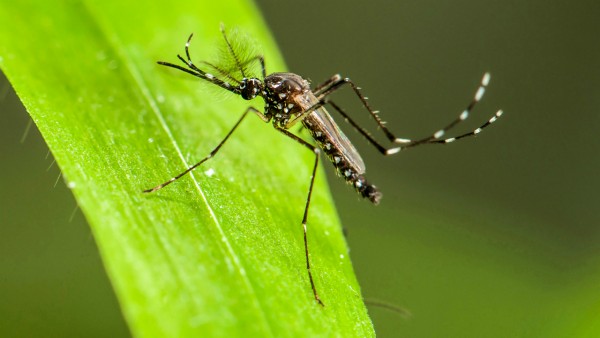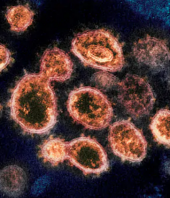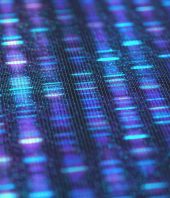The female of the species is more deadly than the male, the famed author Rudyard Kipling wrote, and that’s certainly true for the mosquito Aedes aegypti, also known as the yellow fever mosquito. Only females feast on human blood, transmitting not only yellow fever but also dengue and several other diseases. But what if you could turn all mosquitoes into males? That’s a possibility raised by new research that pinpoints the gene that determines whether a mosquito becomes male.
Scientists have known for decades that at least one gene that makes A. aegyptiembryos male resides on a stretch of DNA on chromosome 1. They named that region the M locus, but until now they were unable to pinpoint the specific gene. Part of the problem: The region contains large amounts of repetitive DNA, making it difficult to sequence that region. (Imagine a huge jigsaw puzzle of the sea: It's almost impossible to know which piece belongs where.) In fact, as it turned out, an A. aegypti genome published in 2007 does not even contain the newly identified gene. "It's very small and it was thrown out with the trash," says Zach Adelman, a molecular geneticist at the Virginia Polytechnic Institute and State University in Blacksburg and one of the authors of the new paper.
To find the gene, Adelman and his colleagues sequenced thousands of pieces of DNA from male and female mosquitoes belonging to two different strains of A. aegypti and looked for stretches that were more common in males of both strains. They found 164 such sequences and matched them against data showing what genes are active in embryos, looking for sequences that seemed to be active in early male embryos. In the 24 sequences that remained, they found one new gene, which they namedNix.
About half of the female embryos injected with a piece of DNA containing that gene developed male genitals, the researchers report online today in Science. (They did not check whether these animals would be able to bite humans and transmit diseases.) “The exact sequence of events that leads to mosquitoes developing as males is not clear," Adelman says. “But we know that Nix is at the top of that cascade and that is what counts.”
“This is excellent basic science and it has potential for genetic control strategies,” says Bart Knols, an entomologist who owns In2Care, a company in Wageningen, the Netherlands, that develops mosquito traps. A first application would be to help with control strategies that already exist. A company called Oxitec, for instance, has produced mosquitoes that carry a lethal gene that kills offspring in early development, which can drastically reduce mosquito populations. But half the mosquitoes produced are females that cannot be released, because they could themselves help spread the diseases they are designed to combat. “The whole system would be cheaper and more efficient if you could produce only males,” Knols says.
First, however, scientists need to show that they can accomplish full sex conversion, Knols cautions. Only some females became male in the study, because the Nix gene needs to be integrated into the genome of the mosquitoes for the protein to be produced in sufficient quantities, Adelman says. “If it is produced all the time in all the tissues, we will hopefully get fully converted, fully fertile males. We are very much working on that.”
In the long term, that could lead to another strategy. Scientists recently reported a system that allows them to push a certain gene into the next generation at almost 100% frequency. Coupling the Nix gene to such a system would essentially create a chain reaction spreading the male gene. “If you release such an animal, it only produces males until eventually the population crashes,” Adelman says. But it is far too early to apply such a technique, he admits. “We need the technology to control these systems before that can be used.”
Source: AAAS, Full Article






